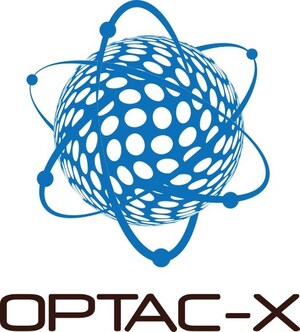OPTAC-X head-mounted camera technology enables pre-hospital EMS telehealth services
ORLANDO, Fla., and ROCHESTER, Minn., Oct. 17, 2024 /PRNewswire/ -- OPTAC-X, a telehealth leader with remote physician and tele-expert networks, today announced it and Mayo Clinic are the first known collaboration to provide physician guidance to an EMS team using OPTAC-X's hybrid LTE-global SATCOM telehealth technology to aid in a patient's successful cardiac arrest resuscitation outside the ambulance and hospital. The technology, which operates on LTE and both LEO and GEO satellite systems, can enable physicians to connect to pre-hospital patients within the ambulance, outside the ambulance or anywhere at any time regardless of local wi-fi availability.
An academic article regarding the 65-year-old female patient was published today in "Mayo Clinic Proceedings: Digital Health," a medical journal published by the Mayo Clinic. The article reports that the patient experienced an out-of-hospital cardiac arrest at her residence, about 4 miles from the Mayo Clinic's emergency department. The patient's family began chest compressions under the direction of the emergency medical dispatchers and continued CPR until first responders arrived. Upon arrival the EMS crew found the patient with no pulse and not breathing.
The EMS crew used OPTAC-X's novel combination of technologies – a head-mounted camera using satellite communications in a patient's home -- to digitally bring an emergency medicine physician's expertise to the crew and patient, providing real-time direction while the EMS crew resuscitated the patient.
Utilizing OPTAC-X's technology, emergency physicians can see and hear in real time what EMS personnel see and hear, including vital signs, as they treat patients before they arrive at the hospital. OPTAC-X has licensed its LTE-global SATCOM architecture and hands-free headsets to Mayo Clinic to enable its remote patient monitoring.
"Helping deliver emergency medical services to this patient in a pre-hospital setting that resuscitated her is the kind of impact we hoped for when we developed OPTAC-X's telehealth technology," said Dr. Patrick Fullerton, founder and CEO of OPTAC-X. "The goal is that our technology can become part of every state and federal emergency agency's standard operating procedure, including the department of defense, and thus contribute to saving many lives on a national and global level."
A key element of OPTAC-X's technology is Vantiq's intelligent platform, which harnesses event-driven and real-time capabilities to furnish emergency services with continuous updates and alerts of a patient's evolving condition. This predictive strategy has the potential to markedly augment intervention effectiveness, ultimately resulting in more lives saved. Vantiq enables advanced sensor intelligence on the edge as well as orchestrates the use of AI to create real-time situational awareness. This aims to empower more efficient crisis management, proactive resource allocation, and readiness for potential scenarios well in advance of a patient's arrival at the facility.
"We are thrilled to partner with OPTAC-X and demonstrate how real-time technology on the edge can help save lives," said Dr. Ryan Vega, chief health officer at Vantiq. "It's thrilling to see in a pre-hospital environment how modern, real-time AI applications contributed to emergency response efforts to resuscitate the patient."
The OPTAC-X telehealth system leverages its exclusive LTE and SATCOM services partner, Kymeta Corporation, the world's leading company for flat-panel antennas and on-the-move SATCOM, to deliver industry leading global LTE and SATCOM capability. Kymeta's software-enabled, metamaterials-based electronically steered antenna (ESA) provides mobile satellite and cellular communications. Backed by U.S. and international patents and licenses, the Kymeta HawkTM u8 terminal for commercial EMS and OspreyTM u8 terminal, a rugged MILSPEC terminal for communications on the move, address the need for lightweight, low-profile, and high-throughput communication systems that do not require mechanical components to steer toward a satellite, whether it be communications on the move (COTM) or communications on the pause (COTP).
About OPTAC-X:
For more information, please visit optacx.com.
About VANTIQ:
Visit VANTIQ's website at https://vantiq.com to explore the features and possibilities of our intelligent platform and embrace the future of real-time insights.
About Kymeta
For more information, visit www.kymetacorp.com.
Media Contact: Joel Staley, 407-242-9994, [email protected]
SOURCE OPTAC-X

WANT YOUR COMPANY'S NEWS FEATURED ON PRNEWSWIRE.COM?
Newsrooms &
Influencers
Digital Media
Outlets
Journalists
Opted In





Share this article